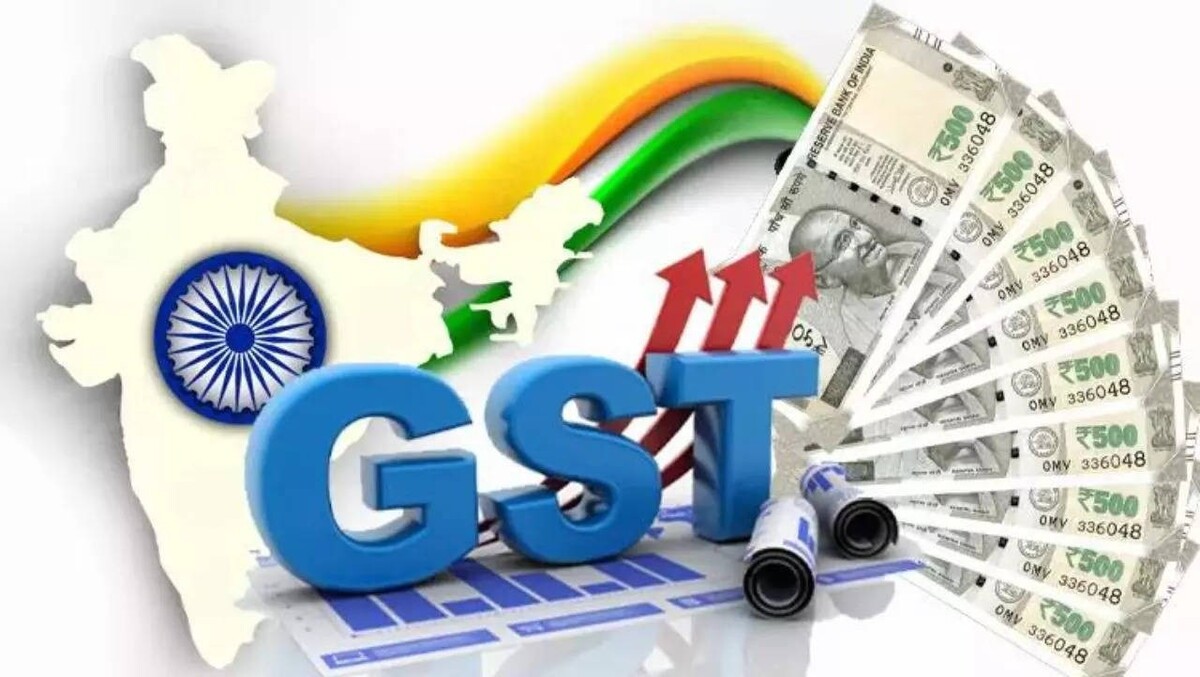Context:
The Goods and Services Tax (GST) collections as a percentage of Gross Domestic Product (GDP) have reached pre-GST levels, Finance Minister Nirmala Sitharaman said.The monthly gross GST collections have been picking pace, recently crossing a landmark of Rs 2 lakh crore, as per the monthly data for April released on May 1 by the Finance Ministry.
Background:
- In India, GST is a successor to VAT used on the supply of goods and service. It is a comprehensive, multistage, destination-based tax. It has subsumed almost all the indirect taxes except a few state taxes.
- GST replaced many indirect taxes in India such as the excise duty, VAT, services tax, etc. The Goods and Service Tax Act was passed in the Parliament on 29th March 2017 and came into effect on 1st July 2017.
About Goods and Service Tax:
- GST is one indirect tax for the whole nation, which will make India one unified common market.
- GST is a single tax on the supply of goods and services, right from the manufacturer to the consumer.
- In the earlier indirect tax regime, the Centre could tax goods up to the production or manufacturing stage, while States collected taxes on the sale or distribution of goods. The right to tax services was vested with the Centre alone.
- Under the GST, both the Centre and the States can tax the entire supply chain in both goods as well as services – right from production to distribution.
- Credits of input taxes paid at each stage will be available in the subsequent stage of value addition, which makes GST essentially a tax only on value addition at each stage.
- The final consumer will thus bear only the GST charged by the last dealer in the supply chain, with set-off benefits at all the previous stages.
Benefits of GST:
For business and industry:
- Easy compliance: A robust and comprehensive IT system would be the foundation of the GST regime in India. Therefore, all tax payer services such as registrations, returns, payments, etc. would be available to the taxpayers online, which would make compliance easy and transparent.
- Uniformity of tax rates and structures: GST will ensure that indirect tax rates and structures are common across the country, thereby increasing certainty and ease of doing business. In other words, GST would make doing business in the country tax neutral, irrespective of the choice of place of doing business.
- Removal of cascading: A system of seamless tax-credits throughout the value-chain, and across boundaries of States, would ensure that there is minimal cascading of
- This would reduce hidden costs of doing business.
- Improved competitiveness: Reduction in transaction costs of doing business would eventually lead to an improved competitiveness for the trade (exports) and industry.
For Central and State Governments:
- Simple and easy to administer: Multiple indirect taxes at the Central and State levels are being replaced by GST. Backed with a robust end-to-end IT system, GST would be simpler and easier to administer than all other indirect taxes of the Centre and State levied so far.
- Better controls on leakage: GST will result in better tax compliance due to a robust IT infrastructure. Due to the seamless transfer of input tax credit from one stage to another in the chain of value addition, there is an in-built mechanism in the design of GST that would incentivize tax compliance by traders.
- Higher revenue efficiency: GST is expected to decrease the cost of collection of tax revenues of the Government, and will therefore, lead to higher revenue efficiency.
For the consumer:
- Single and transparent tax proportionate to the value of goods and services: Due to multiple indirect taxes being levied by the Centre and State, with incomplete or no input tax credits available at progressive stages of value addition, the cost of most goods and services in the country today are laden with many hidden taxes.
- Under GST, there would be only one tax from the manufacturer to the consumer, leading to transparency of taxes paid to the final consumer.
- Relief in overall tax burden: Because of efficiency gains and prevention of leakages, the overall tax burden on most commodities will come down, which will benefit consumers.




Comments (0)